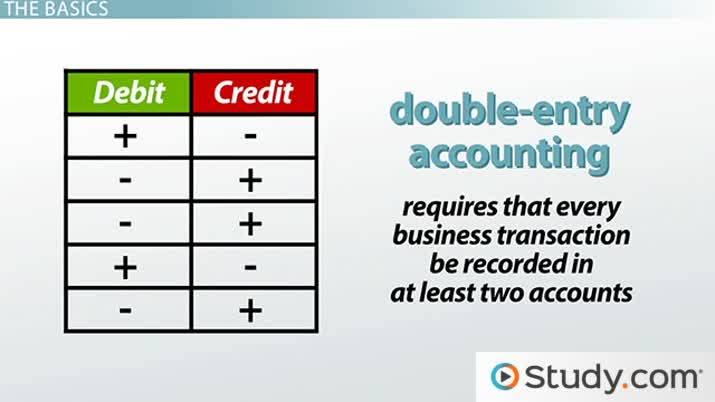How To Understand Debit And Credit?
Are you ready to unravel the mystery behind debit and credit? Well, you’ve come to the right place! Understanding these financial terms may seem daunting at first, but fear not, because I’m here to break it down for you.
Picture this: you’re strolling through a virtual marketplace, wallet in hand, eyeing those fabulous deals. But wait, how do you keep track of your spending? That’s where debit and credit come into play. Think of them as your trusty financial companions, helping you navigate the world of transactions.
Debit is like a direct withdrawal from your bank account. It’s the money that is sent off on a mission to pay for your purchases, instantly subtracting the amount from your balance. It’s like saying, “Here you go, Mr. Merchant, take this money from my account.”
On the other hand, credit allows you to defer payment until a later date. It’s like a friendly loan from your bank, saying, “Sure, go ahead and buy that shiny gadget now, and you can pay me back later.” But remember, that borrowed money isn’t free – you’ll eventually have to repay it, often with interest.
Now that you have a basic understanding of debit and credit, let’s dive deeper into the world of finance and unravel all its intricacies. So grab your virtual wallet, put on your financial thinking cap, and let’s embark on this enlightening journey together!
Understanding Debit and Credit
Debit and credit are essential concepts in accounting. Here’s a step-by-step tutorial on how to understand them:
- Step 1: Recognize that debit represents an increase in assets or expenses, while credit represents an increase in liabilities or revenue.
- Step 2: Understand that debits are typically recorded on the left side of an account, while credits are recorded on the right side.
- Step 3: Remember that the total debits should always equal the total credits for a given transaction or accounting period.
By following these steps, you’ll be able to grasp the fundamental concepts of debit and credit in accounting.

Understanding Debit and Credit: A Comprehensive Guide
Debit and credit are fundamental concepts in the world of finance and accounting. Whether you’re a business owner, a student studying finance, or simply someone who wants to gain a better understanding of personal finances, it’s crucial to grasp the concept of debit and credit. In this article, we will explore the ins and outs of debit and credit, demystifying these terms and providing you with the knowledge you need to navigate financial transactions with confidence.
The Basics of Debit and Credit
Before delving into the complexities of debit and credit, it’s essential to understand their basic definitions. In its simplest form, debit represents an increase in assets or expenses, while credit signifies an increase in liabilities, equity, or revenue. These terms are often used in double-entry bookkeeping, a system that ensures accuracy and balance in financial records.
Debits and credits are recorded in different accounts, each serving a specific purpose. Debits are typically recorded on the left side of an account, while credits are recorded on the right side. This system allows for clear and organized financial reporting, enabling individuals and businesses to track their financial activities accurately.
Double-Entry Bookkeeping: The Foundation of Debit and Credit
Double-entry bookkeeping is the backbone of the debit and credit system. This method requires every financial transaction to be recorded in at least two different accounts. For example, when a business purchases inventory using cash, the inventory account is debited (increased), and the cash account is credited (decreased).
This process ensures that every transaction has an equal and opposite effect on the financial records, maintaining balance and accuracy. By employing double-entry bookkeeping, businesses can identify errors, detect fraudulent activities, and generate comprehensive financial statements.
The Importance of Debit and Credit in Financial Analysis
Now that we have a basic understanding of debit and credit, let’s explore their significance in financial analysis. By examining the debits and credits in various accounts, financial analysts can gain valuable insights into an organization’s financial health and performance.
For instance, analyzing the debits and credits in the revenue account can determine the profitability of a business. If the credits (revenue) exceed the debits (expenses), the business is generating a profit. Conversely, if the debits exceed the credits, the business is incurring a loss.
The Benefits of Understanding Debit and Credit
Understanding debit and credit provides numerous benefits, regardless of whether you’re an individual managing personal finances or a business owner overseeing financial operations. Here are some key advantages:
- Accurate Financial Reporting: By comprehending debit and credit, you can ensure that your financial records accurately reflect your financial activities.
- Better Decision-Making: A solid understanding of debit and credit allows you to make informed financial decisions, helping you allocate resources effectively and maximize profitability.
- Improved Financial Analysis: By analyzing the debits and credits in various accounts, you can gain insights into your financial performance, identify areas for improvement, and make strategic adjustments.
- Financial Stability: Monitoring and managing debits and credits can help you maintain a stable financial position and avoid potential issues such as overdrawing accounts or accumulating excessive debt.
Tips for Mastering Debit and Credit
While debit and credit may seem complex at first, with practice and familiarity, you can become proficient in applying these concepts. Here are some tips to help you master debit and credit:
- Study and Practice: Take the time to study and understand the principles of debit and credit. Practice recording transactions and analyzing their effects on various accounts.
- Consult Resources: Utilize textbooks, online tutorials, and other educational resources to deepen your knowledge of debit and credit. Seek guidance from professionals or mentors who can provide valuable insights.
- Apply Real-Life Examples: Relate debit and credit to real-life scenarios. For instance, think of your personal bank account, where deposits (credits) increase your balance, while withdrawals (debits) decrease it.
By following these tips and dedicating time to learning, you can develop a solid foundation in debit and credit, empowering you to navigate the financial landscape with confidence.
Common Misconceptions about Debit and Credit
Debit and Credit are Not Equivalent to Increase and Decrease
One common misconception is that debit always represents an increase and credit always represents a decrease. However, this is not always the case. While it is generally true in certain scenarios, such as when recording expenses, there are exceptions.
In some instances, debit can signify a decrease, and credit can indicate an increase. For example, when a business makes a payment to reduce a liability, the liability account is debited (decrease), and the cash account is credited (decrease).
Understanding the Impact of Debits and Credits
Another misconception is that debits and credits have the same effect on all accounts. However, the impact of debits and credits varies depending on the account type. For example, debiting an asset account increases its value, while debiting a liability account decreases its value.
It’s crucial to understand the specific impact of debits and credits on each account type to accurately record transactions and maintain balance within the financial records.
A Quick Recap on Debit and Credit
Debit and credit are integral components of financial transactions and accounting practices. While initially complex, understanding these concepts is crucial for anyone involved in financial management. By grasping the fundamentals of debit and credit, you can make more informed financial decisions, analyze your financial performance, and ensure accurate and balanced financial reporting.
Remember to study, practice, and seek guidance to master debit and credit. With dedication and a solid understanding, you’ll soon navigate the intricacies of these financial concepts with ease.
Key Takeaways: How to Understand Debit and Credit?
1. Debit is money taken out of your account, while credit is money added to your account.
2. Debits increase expenses or decrease assets, while credits increase income or decrease liabilities.
3. Debits are recorded on the left side of an account, while credits are recorded on the right side.
4. Debits and credits are used in double-entry bookkeeping to maintain balance.
5. Understanding debits and credits is essential for managing your personal finances or running a business.
Frequently Asked Questions
What is the difference between debit and credit?
In accounting, debit and credit are used to record transactions in a company’s books. Debit refers to an entry that increases an asset or expense account and decreases a liability or equity account. Credit, on the other hand, refers to an entry that increases a liability or equity account and decreases an asset or expense account. Essentially, debit and credit are opposite transactions that affect different types of accounts.
For example, if you purchase office supplies for your business using cash, you would debit the office supplies expense account (increasing the expense) and credit the cash account (decreasing the asset). Understanding the difference between debit and credit is crucial for maintaining accurate financial records.
How do debits and credits affect balance sheets and income statements?
Debits and credits play an essential role in preparing balance sheets and income statements. The balance sheet is a financial statement that shows a company’s assets, liabilities, and equity at a specific point in time. Debits increase assets and decrease liabilities and equity, while credits do the opposite.
On the other hand, the income statement shows a company’s revenue, expenses, and net income over a specific period. Debits increase expenses and decrease income, while credits increase income and decrease expenses. By properly recording debits and credits, you can accurately reflect a company’s financial position and performance in these financial statements.
How can I remember which accounts are affected by debit and credit?
Remembering which accounts are affected by debit and credit can be challenging, but there are some helpful mnemonics that can make it easier. One popular mnemonic is “DEAD CLIC” which stands for:
- Debit: Expenses, Assets, Drawings
- Credit: Liabilities, Income, Capital
By associating these mnemonic terms with their respective account types, you can quickly determine whether a debit or credit entry is needed for a particular transaction.
What are some common examples of debit and credit transactions?
There are numerous examples of debit and credit transactions that occur in everyday business operations. Here are a few common ones:
- Debit: Purchasing inventory with cash, paying utility bills, withdrawing cash from a company bank account.
- Credit: Selling products on credit, receiving payments from customers, taking a loan from a bank.
It’s important to note that the specific accounts affected by debit and credit entries will vary depending on the nature of the transaction and the accounting system used by the company.
What are some resources for further understanding debit and credit?
If you’re looking to deepen your understanding of debit and credit, there are several resources available to help you. Online tutorials and courses, accounting textbooks, and professional accounting organizations offer comprehensive information and guidance on this topic. Additionally, consulting with a certified public accountant or accounting professional can provide personalized assistance and clarification on specific aspects of debit and credit.
Remember, practice is key to mastering debit and credit. The more you engage with real-life examples and apply the concepts, the better you will understand and retain the knowledge.
Final Thoughts
Understanding debit and credit can seem confusing at first, but with a little guidance, you’ll be navigating the financial world like a pro in no time. Remember, when it comes to debits and credits, it’s all about the give and take. Debits represent the amounts that are being taken away from an account, while credits show the amounts being added.
To grasp this concept better, think of your bank account as a see-saw. When you make a purchase, the balance on your account decreases, representing a debit. On the other hand, when you deposit money, the balance increases, representing a credit. It’s like a balancing act, ensuring that both sides are equal.
To keep things organized, debit entries are typically recorded on the left side of an account, while credits are recorded on the right side. This is known as the double-entry bookkeeping system. It ensures that every transaction is properly recorded and balanced, allowing for accurate financial reporting.
Whether you’re managing personal finances or running a business, understanding debit and credit is essential. By grasping the basic principles and practicing with real-life examples, you’ll be able to confidently navigate the world of finance and make informed decisions. Remember, it’s all about the give and take, and with a little practice, you’ll become a master of debits and credits in no time.





